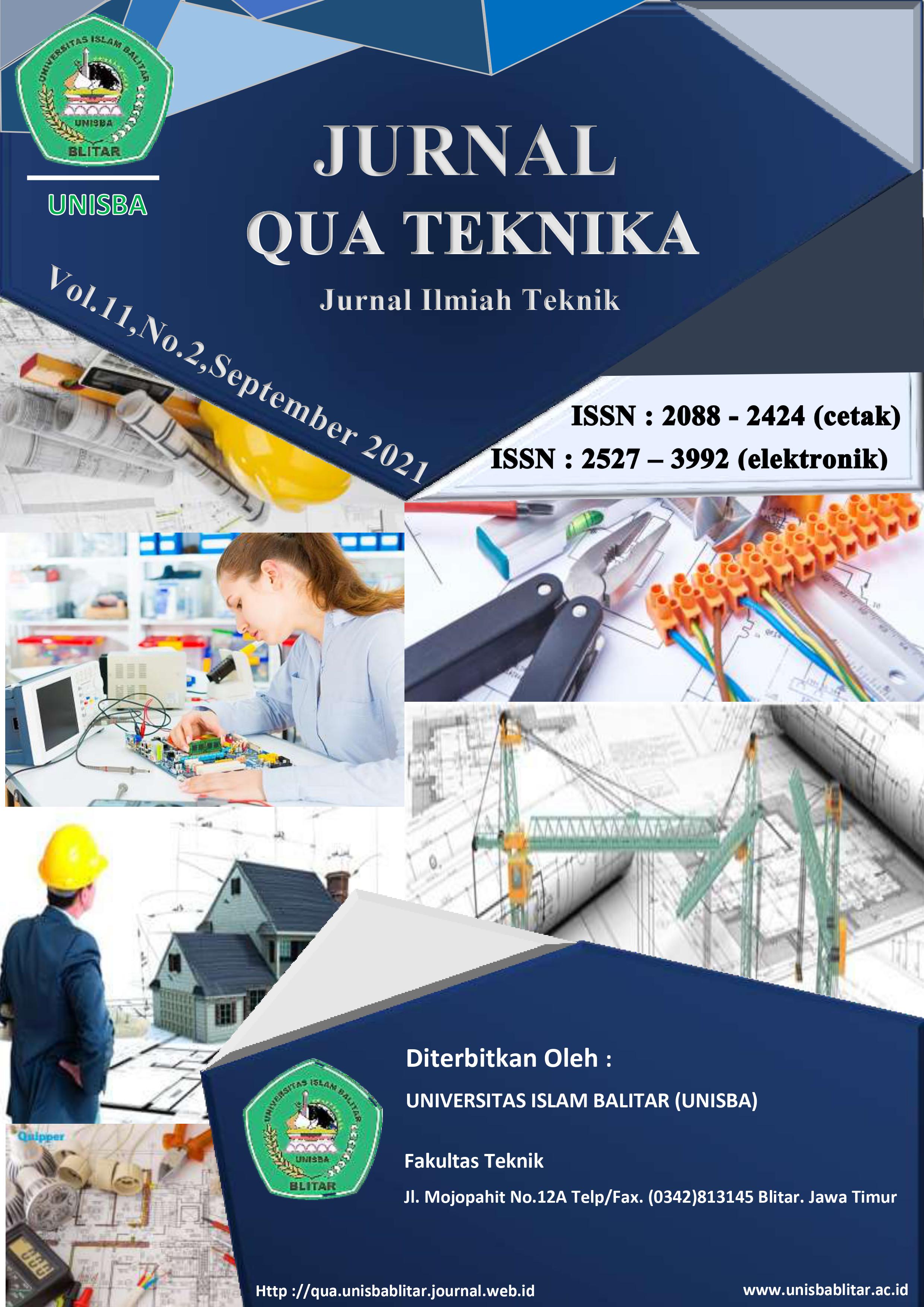ANALISIS DAYA DUKUNG DAN PENURUNAN TIANG PANCANG MENGGUNAKAN DATA PDA TEST DAN PROGRAM PLAXIS PADA PEMBANGUNAN GEDUNG LABORATORIUM DAN KULIAH TERPADU UNIVERSITAS BORNEO TARAKAN
DOI:
https://doi.org/10.35457/quateknika.v11i2.1704Keywords:
Carrying capacity of foundation, foundation settlement, PDA Test, Plaxis, Bagemann methodAbstract
The foundation is the structure of the lower part of a building that is directly related to the ground or part of the building that is located below the ground surface which has the function of bearing the load of other parts of the building above it. There are various kinds of dynamic bearing capacity of the pile foundation, one of which is used with dynamic field test results, namely the PDA Test. The purpose of this research is to determine the carrying capacity of piles using PDA Test data then the results of the analysis will be compared with the results of calculations with Plaxis 2D V.8. The results of the calculation of the bearing capacity of the pile using PDA Test data obtained the largest value, namely 103 tons and the results of the carrying capacity using the Bagemann method obtained the value of 149.51 tons. The calculation of the pile settlement in the CAPWAP data is 12.97 mm at the P 113 pile and the calculation result of the maximum settlement of the pile in the Plaxis calculation is 3.50 mm the estimated single pile settlement meets the safe/permitted requirements.
References
[2] Direktorat Penyelidikan Masalah Bangunan, 1983, Peraturan Pembebanan Indonesia Untuk Gedung, Yayasan Lembaga Penyelidikan Masalah Bangunan, Bandung.
[3] Hary, C.H, 1996, Teknik Fondasi 1. PT Gramedia Pustaka Utama, Anggota IKAPI, Jakarta.
[4] Hary, C. H, 2008, Teknik Fondasi 2, Edisi keempat, Beta Offset, Yogyakarta.
[5] Hernedi, M., Hendra, J.,dan Toni, N, 2015, “Evaluasi Daya Dukung Tiang Pancang Berdasarkan Metode Dinamik”.
[6] Herwin, Eka Priadi, Aprianto, M.Sc, 2017, “Kajian Efisiensi Pada Kelompok Tiang Dengan Konfigurasi 2 X 2” , Vol 4, No 4.
[7] Joseph E. Bowles, 1991, Analisis dan Desain Pondasi, Edisi keempat Jilid 1, Erlangga, Jakarta.
[8]. Reza Satria Warman, 2019, Kumpulan Korelasi Parameter Geoteknik dan Fondasi, Jakarta
[9]. Lauw T. N. PDA Test. [online]. Diakses pada 12 Januari 2020, dari https://lauwtjunnji.weebly.com/pda-test.html .
[10]. Livian, T. 2012, “Evaluasi Pondasi Tiang Dengan Pile Driven Analysis (PDA) Di Kota Palembang”, Vol 1, No1.
[11]. Pangka lan Data Pendidikan Tinggi Profil Perguruan Tinggi. [online]. Diakses pada 20 Desember 2019, dari https://forlap.ristekdikti.go.id/perguruantinggi/detail/OURENTFCRkYtMzZBOC00OUI1LUI4N0MtMzM2MTI0RDk2QTk0 .
[12]. Puskim, 2011, Desain Spektra Indonesia [Online]. Diakses pada 20 Desember 2019, dari http://puskim.pu.go.id/Aplikasi/desain_spektra_indonesia_2011/ .
[13]. Muhammad Samsul Hidayat, 2014, “Perancangan dengan komputer ”, Bandung.
Sugito, 2007, “Modul SAP2000 15.0 Analisis 3D Statik & Dinamik”.
Downloads
Published
Issue
Section
License
Authors who publish with this journal agree to the following terms:
- Copyright on any article is retained by the author(s).
- Author grant the journal, right of first publication with the work simultaneously licensed under a Creative Commons Attribution License that allows others to share the work with an acknowledgement of the work’s authorship and initial publication in this journal.
- Authors are able to enter into separate, additional contractual arrangements for the non-exclusive distribution of the journal’s published version of the work (e.g., post it to an institutional repository or publish it in a book), with an acknowledgement of its initial publication in this journal.
- Authors are permitted and encouraged to post their work online (e.g., in institutional repositories or on their website) prior to and during the submission process, as it can lead to productive exchanges, as well as earlier and greater citation of published work.
- The article and any associated published material is distributed under the Creative Commons Attribution-ShareAlike 4.0 International License
Deprecated: json_decode(): Passing null to parameter #1 ($json) of type string is deprecated in /home/ejournal.unisbablitar.ac.id/public_html/plugins/generic/citations/CitationsPlugin.php on line 68










